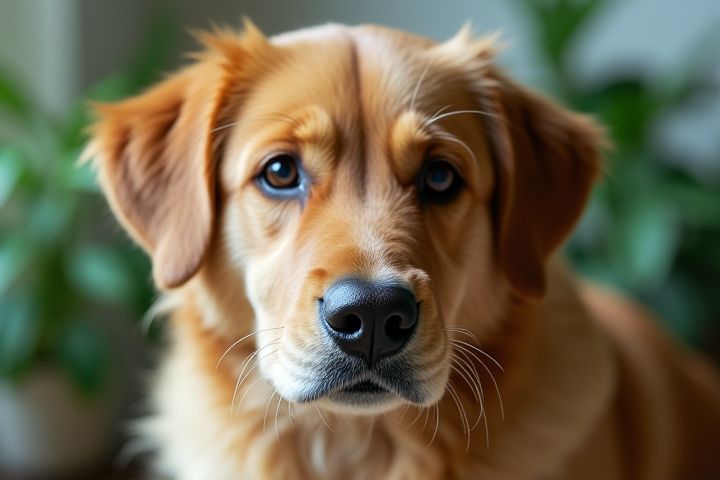
Certain houseplants pose toxicity risks to pets, making it essential for pet owners to be cautious. Popular plants like Philodendron, Dieffenbachia (Dumb Cane), and Pothos can cause gastrointestinal upset or oral irritation if ingested by cats and dogs. Even beloved favorites like Lilies and Sago Palm are highly toxic; they can lead to severe organ damage and potentially be life-threatening. If you have pets, opting for non-toxic houseplants such as Spider Plants, Boston Ferns, or Bamboo Palm can provide a safe environment while still enhancing your home. Always consult with a veterinarian if you suspect your pet has ingested a toxic plant to ensure their well-being.
Which Houseplants Are Toxic To Pets
Lily
Lilies, particularly the Easter lily, Tiger lily, and Daylily, are highly toxic to cats, causing severe kidney damage or even death. Ingesting just a small amount of any lily's leaves, flowers, or pollen can lead to symptoms like vomiting, loss of appetite, and lethargy. Pet owners should be aware that even indirect exposure, such as pollen falling onto their fur, can be hazardous. For a safe home environment, consider replacing lilies with non-toxic plants like spider plants or Boston ferns to protect your furry friends.
Pothos
Pothos, scientifically known as Epipremnum aureum, is a popular houseplant that poses a significant risk to pets, particularly cats and dogs. This plant contains calcium oxalates, which can cause symptoms like oral irritation, vomiting, and difficulty swallowing if ingested. If your pet chews on or consumes parts of the plant, even small amounts, it could lead to discomfort and health issues. Keeping Pothos out of reach or opting for pet-safe alternatives can help ensure the safety of your furry companions.
Sago Palm
The Sago Palm (Cycas revoluta) is highly toxic to pets, particularly dogs and cats, due to containing toxic compounds called cycasin. Ingesting even small amounts of this plant can result in severe side effects, including vomiting, diarrhea, and liver failure, with symptoms frequently appearing within 15 minutes to several hours after exposure. It's estimated that about 50% of pets that consume parts of the Sago Palm may not survive, highlighting the critical importance of keeping this plant out of reach. If you suspect your pet has ingested any part of a Sago Palm, immediate veterinary attention is vital for potential treatment.
Dieffenbachia
Dieffenbachia, commonly known as dumb cane, contains calcium oxalate crystals that are highly toxic to pets, particularly cats and dogs. Ingesting even small amounts can lead to symptoms such as oral irritation, swelling of the mouth and tongue, and difficulty swallowing. If a pet has consumed Dieffenbachia, it is crucial to seek veterinary attention, where treatment may include administering activated charcoal or oral hydration therapy. You can protect your furry companions by placing this plant out of their reach or opting for pet-friendly alternatives.
Oleander
Oleander (Nerium oleander) is highly toxic to pets, with even small ingestions potentially causing severe health issues. The plant contains cardenolides, which can lead to symptoms such as vomiting, diarrhea, and in serious cases, heart problems and even death. It is crucial to keep Oleander out of reach of cats and dogs, as all parts of the plant, including leaves and flowers, are poisonous. If you suspect your pet has ingested Oleander, immediate veterinary attention is essential to ensure their safety and health.
Philodendron
Philodendron plants are popular houseplants known for their attractive foliage, but they contain calcium oxalate crystals, making them toxic to pets like dogs and cats. If a pet ingests any part of the Philodendron, it can lead to symptoms such as oral irritation, vomiting, and difficulty swallowing. The severity of the reaction varies based on the amount ingested and the size of your pet. To ensure your pet's safety, consider placing Philodendron out of reach or selecting non-toxic alternatives for your home.
Ivy
Ivy, particularly English ivy (Hedera helix), is highly toxic to pets, especially dogs and cats. Ingestion can lead to symptoms such as vomiting, abdominal pain, and excessive drooling, often occurring within a few hours of consumption. It contains saponins and polyacetylene compounds that can irritate your pet's digestive system. If you suspect your pet has ingested ivy, it's crucial to contact your veterinarian immediately for guidance and treatment options.
Peace Lily
Peace Lily (Spathiphyllum) is notably toxic to pets, particularly cats and dogs. If ingested, it contains calcium oxalate crystals that can cause oral irritation, vomiting, and difficulty swallowing, making it a serious concern for pet owners. Symptoms may occur within a few hours of ingestion, and it is essential to monitor your pet closely if you suspect they have consumed any part of the plant. To ensure the safety of your furry friends, consider removing Peace Lilies from your home or placing them in areas that are completely inaccessible to pets.
Snake Plant
The Snake Plant, scientifically known as Sansevieria, is a popular houseplant that is toxic to pets, particularly cats and dogs. When ingested, it can cause gastrointestinal issues such as vomiting and diarrhea due to the presence of saponins. Symptoms may vary based on the amount consumed, with mild cases leading to discomfort and more severe cases requiring veterinary attention. Keeping your Snake Plant out of reach can help ensure your furry companions stay safe and healthy.
ZZ Plant
The ZZ Plant (Zamioculcas zamiifolia) is a popular houseplant known for its attractive foliage and low maintenance requirements. However, it contains calcium oxalate crystals, which can be toxic to pets, particularly cats and dogs. Ingesting even small amounts can lead to symptoms such as vomiting, drooling, and difficulty swallowing. Keeping your ZZ Plant out of reach from pets is crucial to ensure their safety while still enjoying the aesthetic benefits of this resilient plant.
